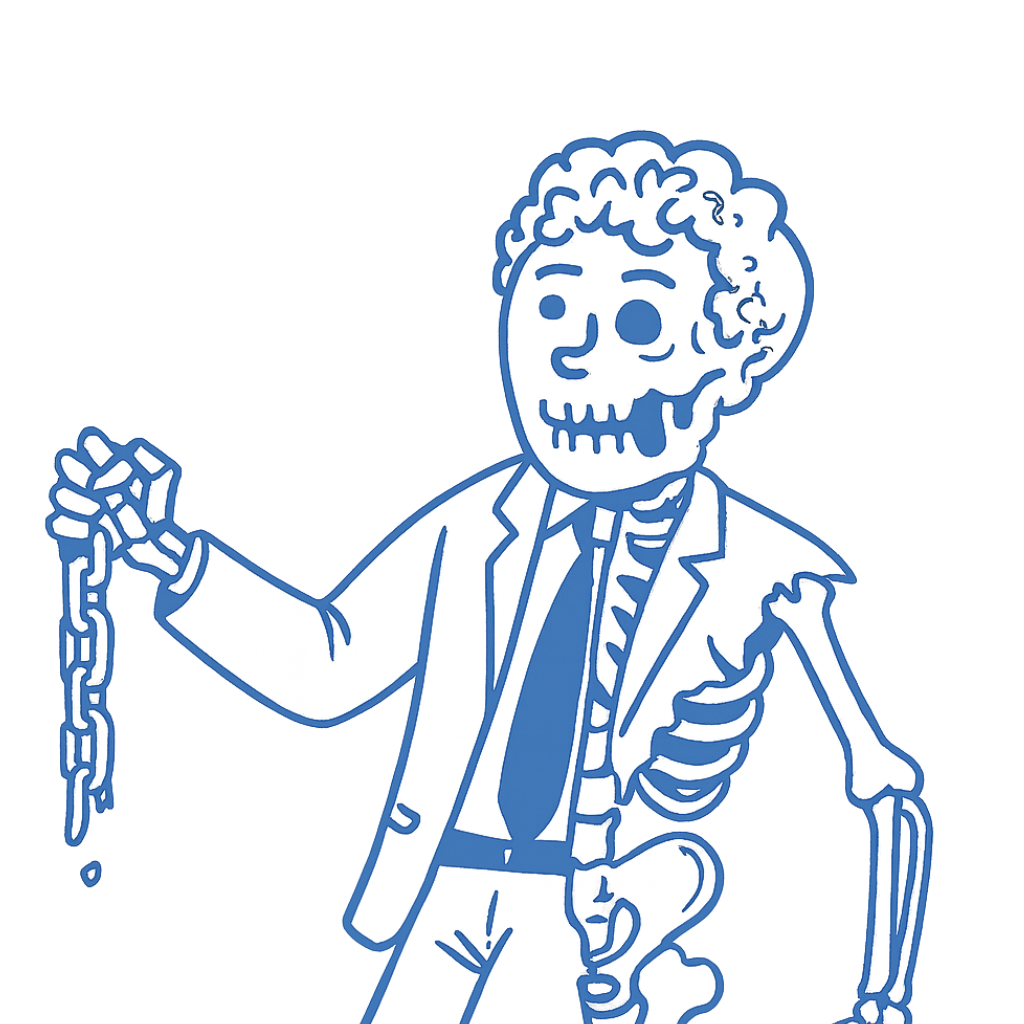Table of Contents
- Google’s Helpful Content System prioritizes originality, expertise, and user-first content, especially after the August 2024 core update.
- High-DA links alone aren’t enough. Evaluate link sources based on content quality, relevance, and Helpful Content criteria.
- Use AI tools to score pages against Google’s self–assessment to determine link value and page quality.
- Create passive link magnets, such as data-driven statistics posts, that earn links over time without requiring ongoing outreach.
- Avoid scaled or expired domain content abuse, as Google’s new spam policies target manipulative shortcuts harshly.
Note: This post is updated to reflect Google’s August 2024 core update.
In March 2024, Google Search Central blog just posted a new update titled “What web creators should know about our March 2024 core update and new spam policies”.
The post outlined several changes that could impact the future of link building, content creation, and upend strategies that many sites rely on.
I started my career in marketing right after the Google Penguin and Panda algorithms hit, and the repercussions could echo for years to come.
This Helpful Content System core update proved to be another earth-shaking move by Google.
So, if you are a casual link builder, digital PR, or a major agency, this updated everyone.
Fast forward today and Google released an August 2024 core update. On Sept. 4, Google announced the roll out was complete.
This time, the update focused on improving the prior Helpful Content updates, which errantly impacted many sites that were doing exactly what Google laid out in their Helpful Content recommendations. I explain a bit more in the next section.
With all of these Helpful Content changes, we have some tips for staying ahead of the curve below.

What is the Helpful Content System?
Before we get into it, let’s briefly cover the Helpful Content System and why Google stresses it so much.
The Helpful Content System isn’t new. Google launched this in August 2022.
The key aspects it looks at are:
- Does the content provide original information, reporting, or analysis?
- Creating content for users, not search engines.
- Demonstrating expertise and first-hand experience in the content shared on the page.
But wait a minute, is all of this new? Shouldn’t we always be writing content in this way?
Yes, but it seems too many sites have tried to game the system. (You may have heard about the now infamous SEO heist.)
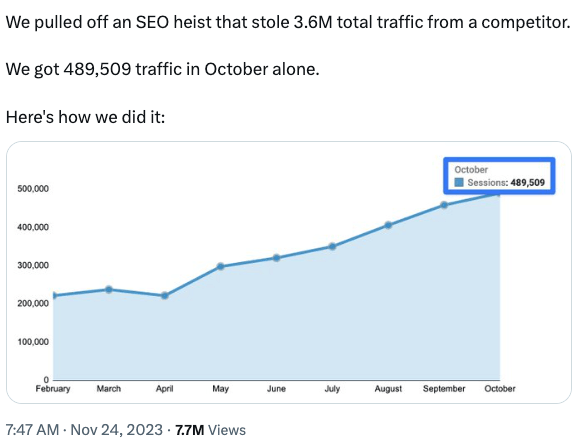
The proliferation of tools and AI has made scaling content creation too easy, and the quality has continued to fall.
This March 2024 core update doubled its emphasis on user-centric content, prioritizing informative and valuable content that avoids clickbaity tactics.
But we didn’t know then that many good sites would also be impacted.
Friendly Fire Fallout
As I mentioned in the intro, Google’s March 2024 update wrongly impacted many sites that produce user-centric, informative content, which generated a lot of negative press and feedback toward Google.

HouseFresh, an air-purifier review website from NeoMam Studio‘s Giselle Navarro, became somewhat of a poster child of the campaign against Google’s practices.
This article Giselle wrote saw over 1.1k links during the past few months.
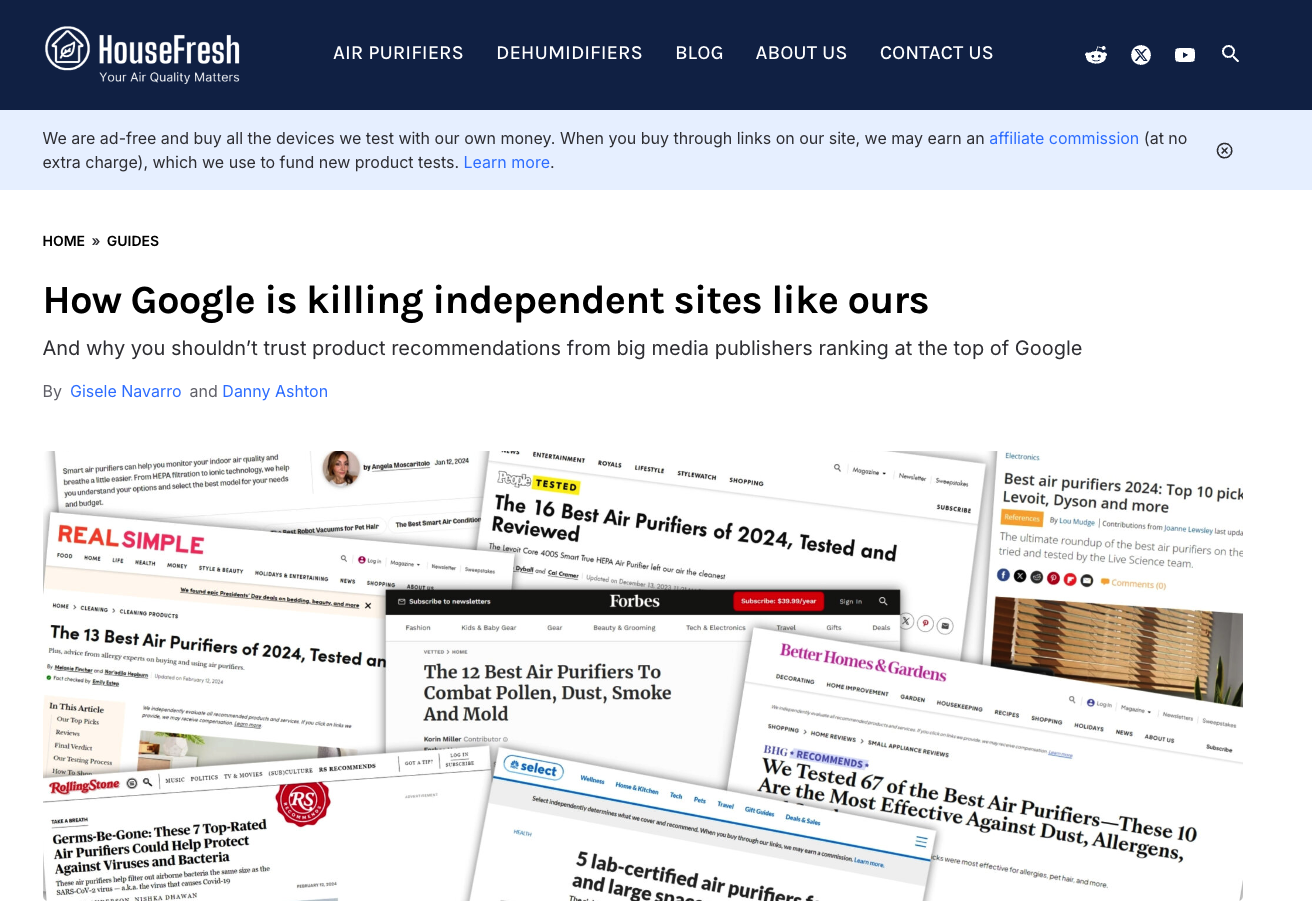
In the screenshot below, traffic for HouseFresh completely drops off. Luckily, after this newest core update, traffic almost completely recovers.
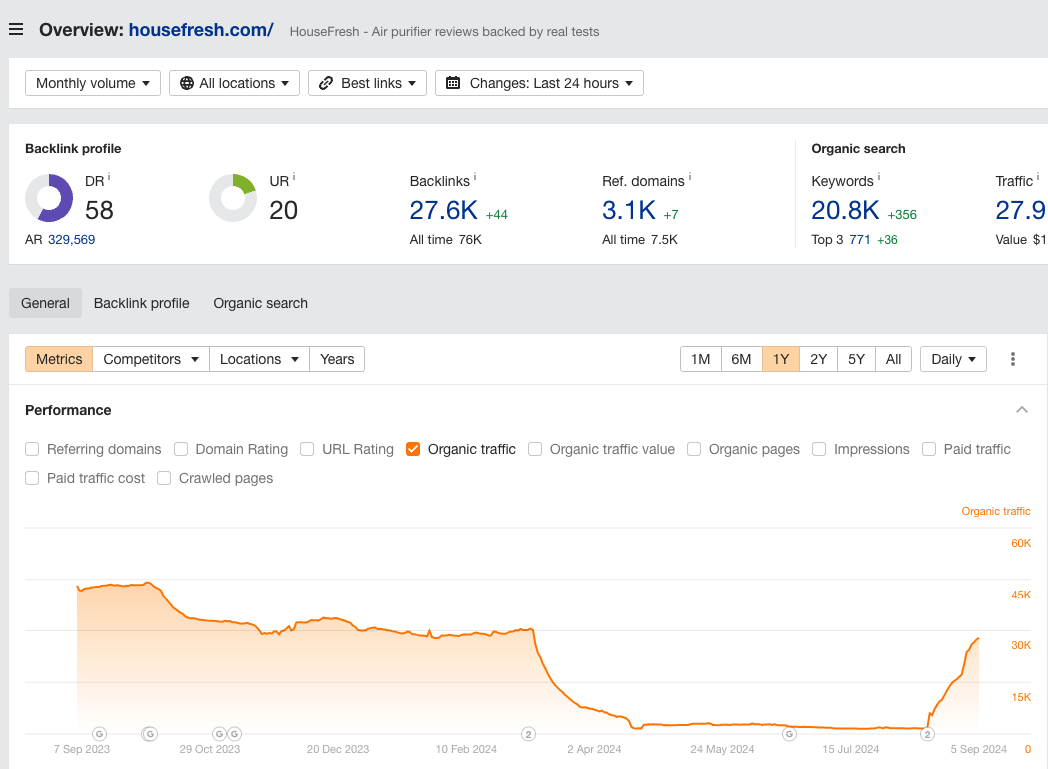
All of the information below hasn’t changed.
The best strategy is still the one that focuses on building high-quality links from highly relevant sites.
Below are four things that link builders need to know based on this Helpful Content update.
1. Focus On Building Quality and Relevant Links
You can read at length about quality links and relevant links, and while this may not be new, it’s taken on a new level of urgency with this new algorithm update.
Google still hasn’t found a way to move away from links as a ranking signal as much as they may want to. Links are the primary way Google traverses the web.
But, by developing a new set of guidelines, Google can disrupt the years of scaled link building with minimal oversight that brands have become accustomed to relying on.
So, they will continue to put much more value on quality and relevancy.
The definition of link “quality” is that it’s on a page that provides Helpful Content.
So, let’s get into how you can determine what makes content “Helpful.”
2. Evaluate Links Based on Helpful Content
Unfortunately, just because a site has a high DA/DR doesn’t mean the content is Helpful. It is still likely that a high DR site has Helpful Content, but this is not always the case—and we are seeing this play out in the rankings.
Prominent, high-DA/DR publications have been penalized with lower rankings, while low-DA/DR sites rank well. (Lily Ray produces excellent yearly analyses of winners/losers.)
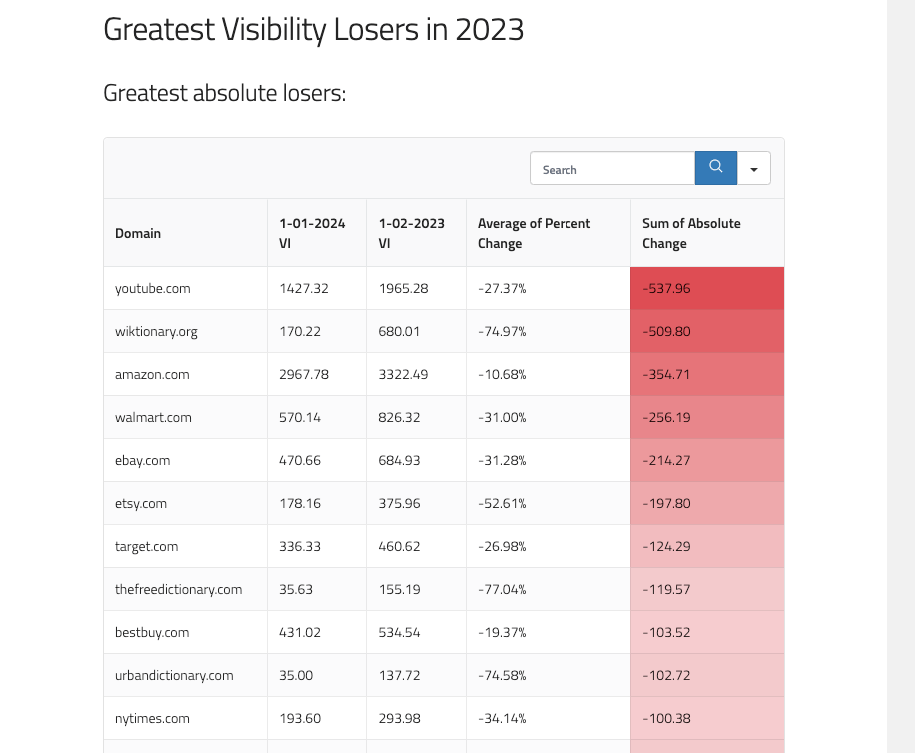
So, we need a new placeholder metric.
Google provides insightful documentation of what makes Helpful Content from a list of questions on their blog.
We can use this as our basis.
I recommend using ChatGPT or asking a tool like Gemini to assess your own content.
You can use these steps:
- Ask your AI tool to take Google’s Helpful Content self-assessment list and create a scoring system.
- Cut and paste the contents of a page into the AI tool.
- Ask it to evaluate based on the scoring system.
This isn’t foolproof, given that it’s a qualitative evaluation, but it should give you a sense of what is missing when evaluating whether or not a site is worth building a link from or the value of the link on the page itself.
If you’re looking for a visual checklist for helpful content, it would look something like this:
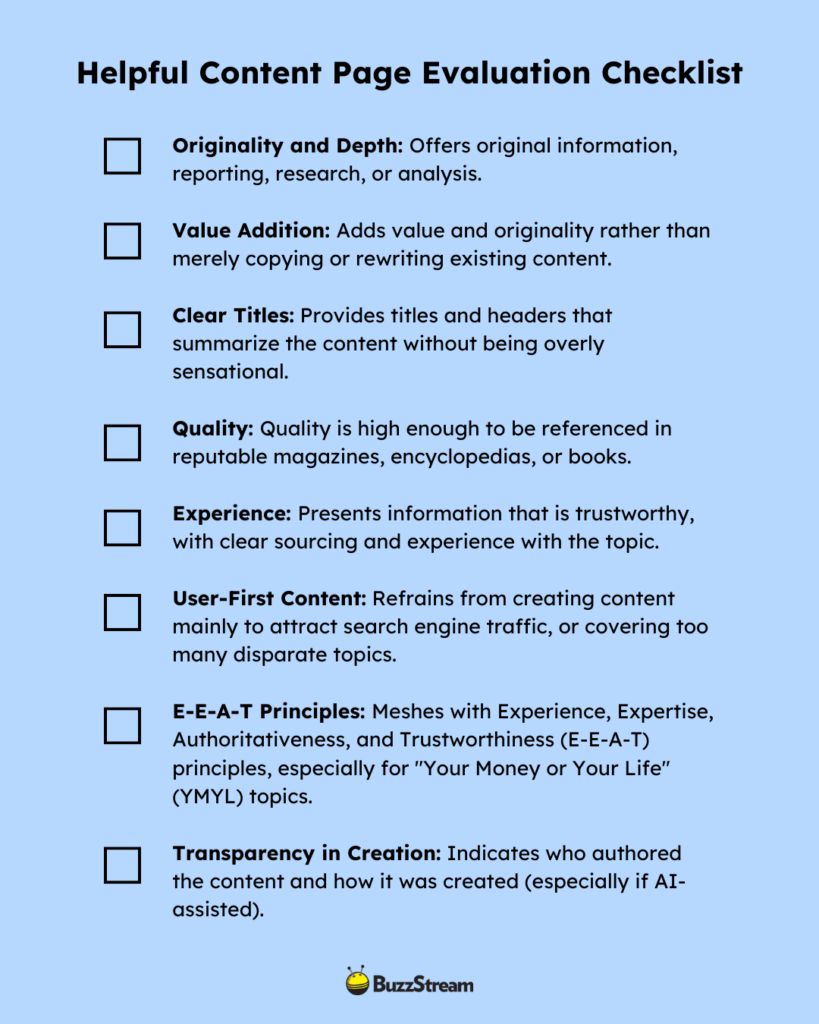
Tip: Helpful Content isn’t the only signal that a link or page is valuable. Also, be sure to look for relevancy.
3. Build Helpful Content That Generates Links Passively
Passive link generation isn’t anything new. Statistics posts are the most common version of posts that generate links passively.
The idea is that you create content around a keyword with high link intent.
Focus on keywords that users search for unique data or research to support their claims.
You can see this in action with a post we just published on link building statistics. In just the short time since publication, it’s already acquired highly relevant links, helping it rank better—all without any outreach.
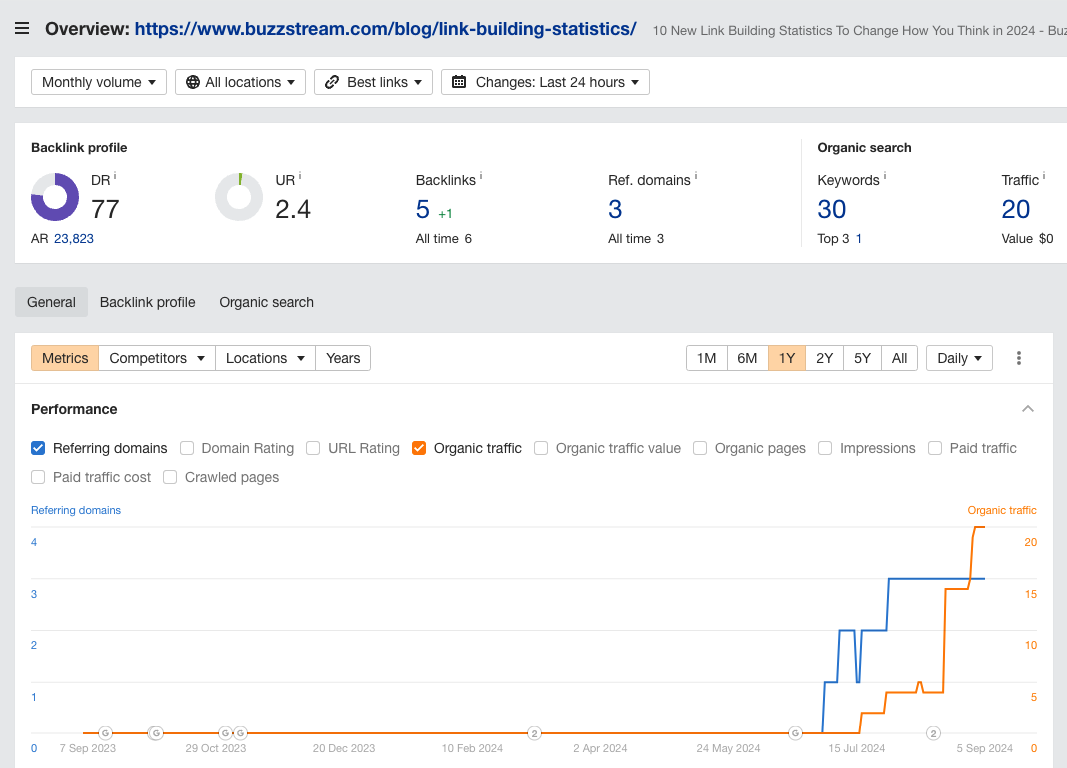
Other versions of this have included definitional queries and “types of” or “trends” keywords.
You can also get creative with this approach. For instance, consider the keyword “couples sleeping positions.”
This phrase is a relevant keyword for Casper. But instead of providing just an informational answer, they gathered unique data through a survey.
This term has a high search volume, and the unique data makes it something they can pitch. However, over time, it gains links passively.
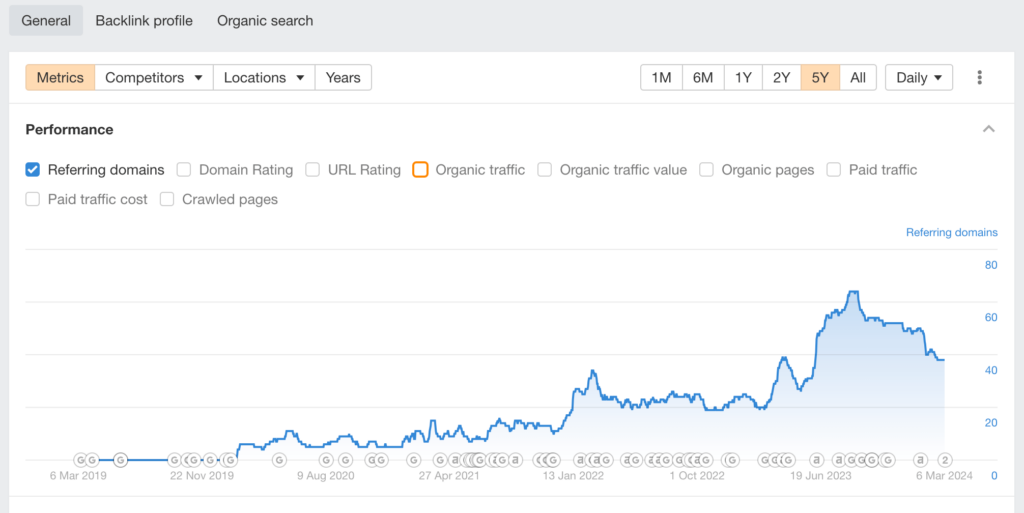
A brand needs to be sufficiently authoritative to leverage this approach, so in most cases, it needs to build some links first to get the gears moving.
For instance, I helped publish a Women in Construction post years ago and did an initial outreach push to get it showing up in the SERPs, and now, every year, it acquires more links each March during Women in Construction Week.
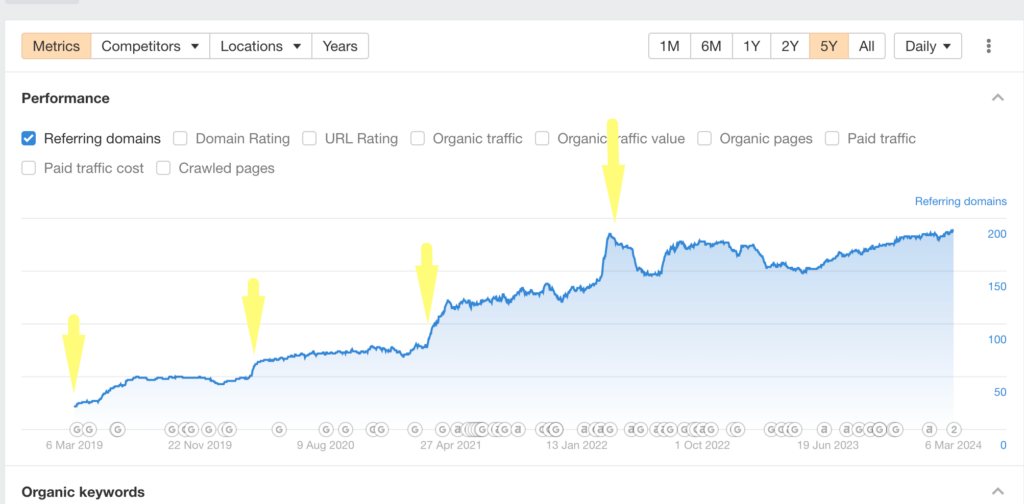
You can see the boosts each month in the image above.
4. Focus on Sustainable Strategies, Not Shortcuts
Google also introduced new spam policies targeting specific practices often used for link manipulation and shortcuts.
I’ll briefly outline them here:
The main one is expired domain abuse. This is where someone buys an expired domain, fills it with low-quality content, and essentially deceives users by leveraging its existing reputation.
This practice is rife with malicious spam and phishing, but some also use it as a shortcut to rankings, links, and ad dollars.
Buying an existing domain is still OK if the site is maintained and properly cared for, but it won’t fly with Google if it spits out low-quality content.
The next is very similar; Google calls scaled content abuse, which refers to creating large amounts of unoriginal content with minimal value to users, regardless of the creation method (automated or manual).
Google has been careful with its wording about AI: “Our long-standing spam policy has been that use of automation, including generative AI, is spam if the primary purpose is manipulating ranking in Search results.”
But it echoes what you see in the Helpful Content guidelines.
Overall, building links through valuable content creation like digital PR and other white hat methods remains crucial.
The Future of Link Building in the Helpful Content Era
With all of these new developments, the future of link building is bright for those willing to adapt.
The aforementioned passive link building approach is one that many brands are beginning to adopt.
Tactics like broken link building, link insertions, and guest posting are still viable; we need to shift our qualification methods.
Any link building strategy where you have control over where your link appears will still work in this new era.
Happy building.

 End-to-end outreach workflow
End-to-end outreach workflow



 Check out the BuzzStream Podcast
Check out the BuzzStream Podcast

